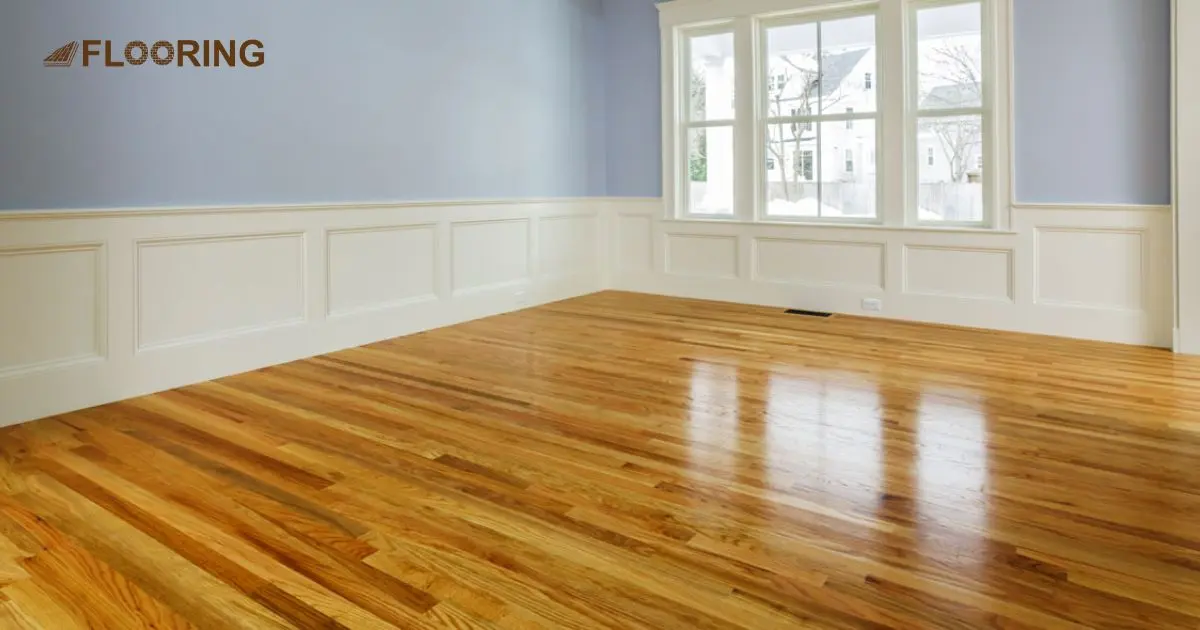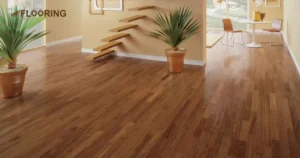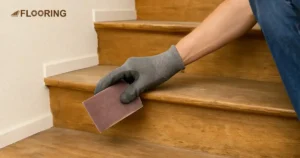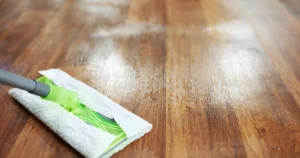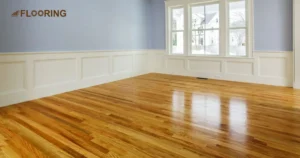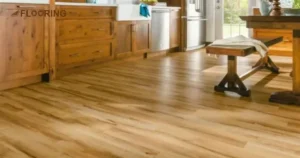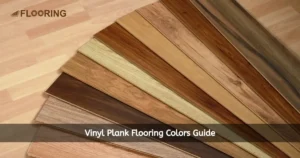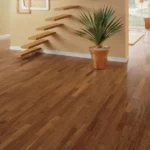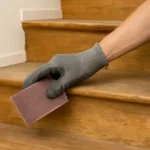Changing the color of vinyl plank flooring is a tempting idea for homeowners looking to refresh their space. While it’s possible to alter the color, it’s not always recommended due to potential risks and limitations. The process can affect the flooring’s durability and may void warranties.
Before deciding to change your vinyl plank color, it’s crucial to understand the available options and their implications. This article explores various methods, preparation steps, and alternatives to help you make an informed decision about transforming your vinyl plank flooring.
📑 Table of Content
Key Takeaways
- Changing the vinyl plank flooring color is possible but comes with risks and limitations.
- Painting, refinishing kits, and professional services are options for altering vinyl plank color.
- Proper preparation and use of specialized products are crucial for successful vinyl plank color change.
- Alternatives like new flooring installation or using area rugs can achieve a new look without altering existing vinyl planks.
- Modified vinyl plank flooring may require more frequent maintenance and have a shorter lifespan than original surfaces.
Potential Risks of Altering Vinyl Plank Color
Changing the color of vinyl plank flooring comes with several risks. These risks can affect the flooring’s appearance, performance, and longevity. It’s important to consider these factors before proceeding with any color alteration.
- Warranty voiding: Most manufacturers void warranties if the flooring is painted or altered.
- Reduced durability: Paint or refinishing products may not adhere well to vinyl, leading to peeling or chipping.
- Uneven wear: The new finish may wear unevenly, especially in high-traffic areas.
- Moisture issues: Some alterations can affect the flooring’s water-resistant properties.
- Texture changes: Painting or refinishing can alter the original texture of the vinyl planks.
- Difficulty in reversal: Once altered, it’s challenging to restore the original appearance.
Limitations of Vinyl Plank Color Modification
Modifying vinyl plank color has several limitations. These constraints can affect the outcome and may influence your decision to proceed with the color change.
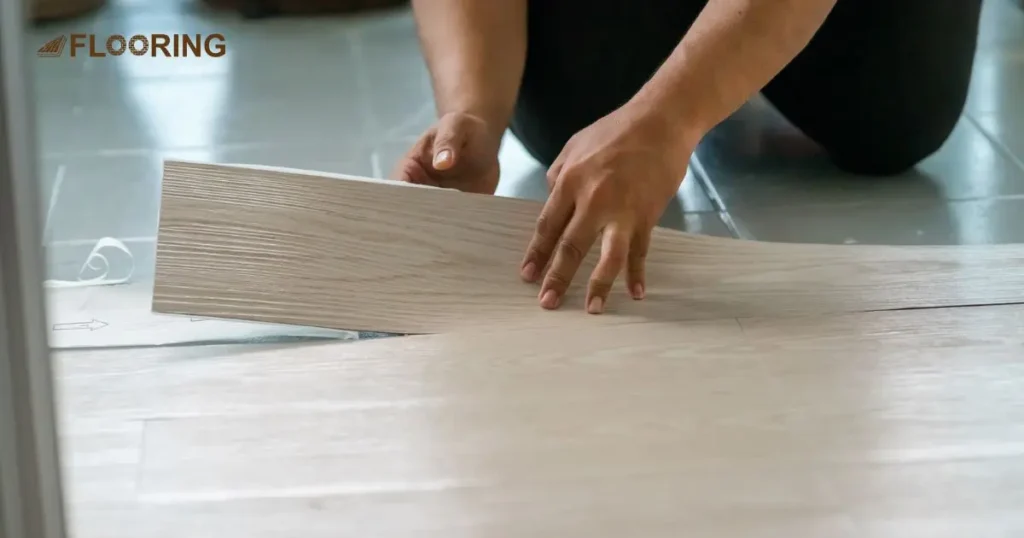
| Limitation | Description |
| Color options | Limited range compared to original vinyl plank colors |
| Finish quality | It may not match the smoothness or sheen of the factory finish |
| Pattern replication | Difficult to replicate wood grain or tile patterns |
| Thickness changes | New layers can affect door clearances and transitions |
| Chemical compatibility | Not all paints or finishes adhere well to vinyl |
| Long-term appearance | It may look less natural over time compared to the original |
Options for Changing Vinyl Plank Flooring Color
Despite the risks and limitations, there are several methods to change vinyl plank color. Each option has its own set of pros and cons. The choice depends on your specific needs, budget, and desired outcome.
Painting Vinyl Plank Flooring
Painting is a common method for changing vinyl plank color. It involves applying special paint designed for vinyl surfaces. This option allows for a wide range of color choices but requires careful preparation and execution.
When considering painting, keep in mind that changing dark and light vinyl plank flooring colors can present different challenges. Lightening dark floors often requires more coats, while darkening light floors may be easier but could affect the wood-like appearance.
The process typically includes cleaning, sanding, priming, and applying multiple coats of paint. It’s crucial to use paint specifically formulated for vinyl to ensure proper adhesion. While painting can provide a fresh look, the results may not be as durable as the original finish.
Using Vinyl Flooring Refinishing Kits
Vinyl flooring refinishing kits offer a more specialized approach to color change. These kits are designed specifically for vinyl surfaces and often include all necessary materials. They can be a good option for DIY enthusiasts seeking a more controlled process.
Refinishing kits usually contain a cleaner, etching solution, color, and a protective topcoat. While they can refresh the appearance of vinyl planks, they may be limited in color options. The results are generally more durable than regular paint but may not match the longevity of the original finish.
Professional Vinyl Floor Refinishing Services
For those seeking a more reliable outcome, professional refinishing services are an option. These specialists have experience working with vinyl flooring and access to industrial-grade materials. Professional refinishing can potentially offer better results and durability.
Professional services often use techniques and products not available to consumers. They can provide a wider range of color options and may be able to achieve a finish closer to the original. However, this option is typically more expensive than DIY methods.
Preparing for Vinyl Plank Color Change
Proper preparation is crucial for successful vinyl plank color change. This step ensures better adhesion of new finishes and helps identify potential issues. Thorough preparation can significantly impact the final result and longevity of the new color.
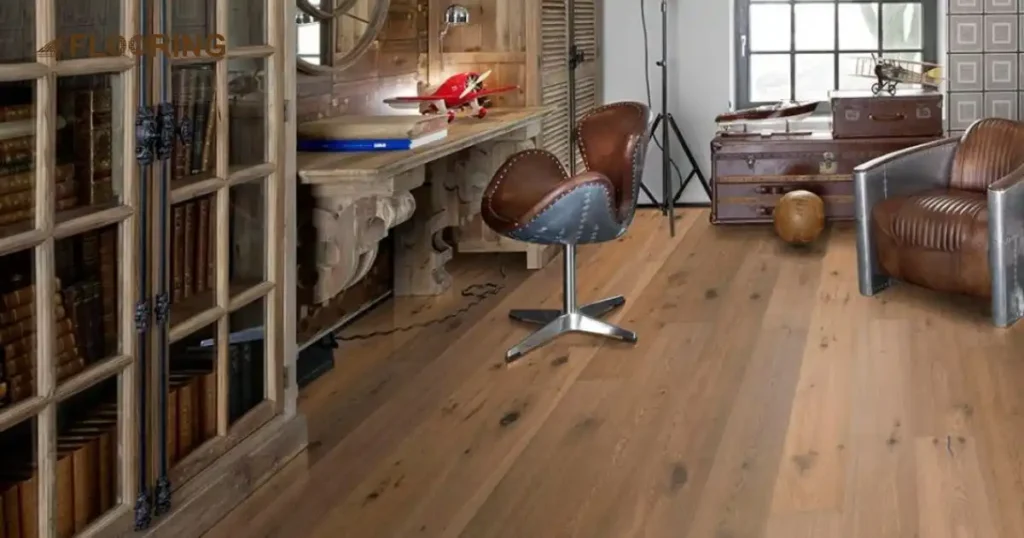
Assessing Flooring Condition and Warranty
Before proceeding with any color change, evaluate your flooring’s current state and warranty status. This assessment helps determine if color change is feasible and what its potential impact is on your warranty.
- Damage inspection: Look for scratches, dents, or loose planks that may affect the new finish.
- Warranty Review: Check your flooring warranty to understand how color changes might impact coverage.
- Age consideration: Older or heavily worn flooring may not be suitable for color change.
- Subfloor evaluation: Ensure the subfloor is stable and free from moisture issues.
- Surface texture: Assess if the current texture is compatible with painting or refinishing.
Gathering Necessary Materials and Tools
Collecting the right materials and tools is essential for a successful vinyl plank color change. The specific items needed may vary depending on the chosen method.
- Cleaning supplies: Gather pH-neutral cleaners and microfiber cloths for surface preparation.
- Sanding materials: Obtain fine-grit sandpaper or sanding blocks for surface roughening.
- Primer: Select a primer specifically designed for vinyl surfaces.
- Paint or refinishing kit: Choose a product formulated for vinyl flooring.
- Application tools: Collect rollers, brushes, or applicators appropriate for the chosen product.
- Protective gear: Prepare safety goggles, gloves, and a mask for personal protection.
- Ventilation equipment: Set up fans or open windows to ensure proper air circulation.
Painting Process for Vinyl Plank Flooring
The painting process for vinyl plank flooring requires careful execution. Each step is crucial for ensuring proper adhesion and durability of the new color. Attention to detail during this process can significantly impact the outcome.
Surface Preparation Techniques
Proper surface preparation is essential for paint adhesion and longevity. This step involves cleaning and creating a suitable surface with which the new paint can bond.
- Deep cleaning: Remove all dirt and grime from the flooring surface using a suitable cleaner.
- Light sanding: Gently sand the surface to create a slightly rough texture for better paint adhesion.
- Damage repair: Fill any scratches or dents with vinyl filler before painting.
- Degreasing: Use a degreasing agent to remove oily residues that could interfere with paint adhesion.
- Priming: Apply a primer specifically designed for vinyl surfaces to improve paint bonding.
- Dust removal: Thoroughly vacuum and wipe the surface to remove all dust particles.
Applying Special Vinyl Floor Paint
Using the right paint and application techniques is crucial for achieving a durable and attractive finish on vinyl plank flooring.
- Paint selection: Choose a paint specifically formulated for vinyl flooring surfaces.
- Thin coat application: Apply multiple thin coats rather than one thick coat for better durability.
- Tool use: Use rollers or brushes designed for smooth surfaces to apply the paint evenly.
- Drying time: Follow the manufacturer’s instructions for drying time between coats.
- Topcoat application: Apply a clear sealant designed for vinyl floors to protect the new color.
- Ventilation: Ensure proper air circulation during and after the painting process.
Alternatives to Changing Vinyl Plank Color
When changing the color of vinyl plank flooring isn’t feasible, there are alternative options to consider. These alternatives can provide a fresh look without the risks associated with altering the original flooring surface.
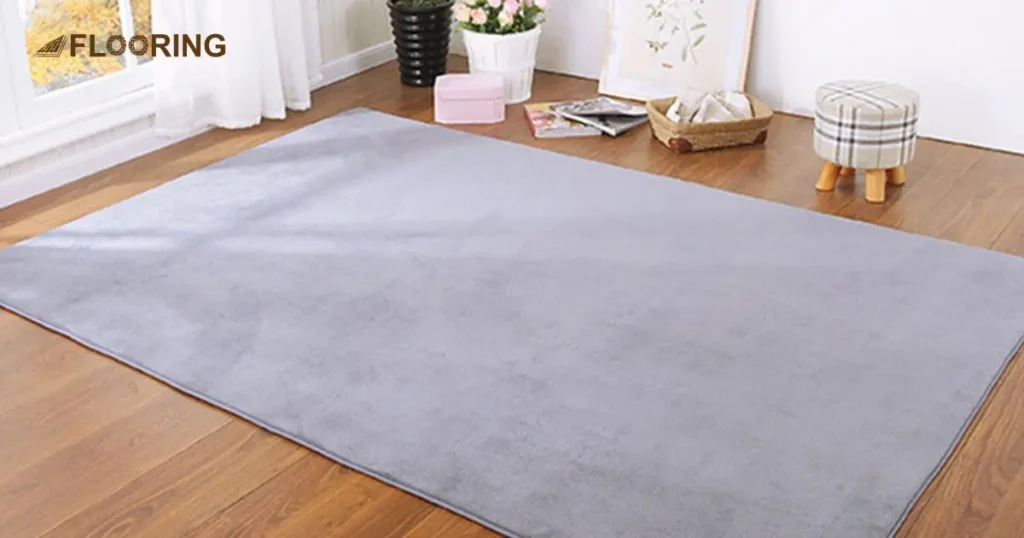
Installing New Vinyl Plank Flooring
Replacing existing vinyl planks with new ones in your desired color is often the most reliable option. This approach ensures a professional finish and maintains the flooring’s original durability and warranty.
- Remove existing vinyl planks carefully to avoid damaging the subfloor.
- Clean and prepare the subfloor, addressing any issues like unevenness or moisture.
- Acclimate new vinyl planks to room temperature for at least 48 hours.
- Install a suitable underlayment if required by the manufacturer.
- Begin laying new planks, following the manufacturer’s instructions for spacing and alignment.
- Use proper cutting tools to fit planks around obstacles and edges.
- Secure planks using the recommended installation method (click-lock, glue-down, etc.).
- Allow proper settling time before moving furniture back into the room.
Using Area Rugs and Floor Mats
Area rugs and floor mats offer a simple way to change the look of a room without altering the vinyl planks. This method is reversible and allows for easy updates to room decor.
- Size selection: Choose rugs or mats that cover significant portions of the floor to change the room’s color scheme.
- Non-slip backing: Select options with non-slip backings to prevent movement on vinyl surfaces.
- Rotation practice: Rotate rugs periodically to ensure even wear and protect the vinyl underneath.
- Seasonal changes: Use different rugs to update decor without permanent alterations to the flooring.
- Color coordination: Select rug colors that complement or contrast with existing vinyl plank colors.
- Texture variety: Incorporate different textures to add visual interest to the room.
Durability and Maintenance of Modified Vinyl Planks
Altering the color of vinyl plank flooring can impact its durability and maintenance requirements. Understanding these changes is crucial for preserving the new finish and ensuring long-term satisfaction with the modified flooring.
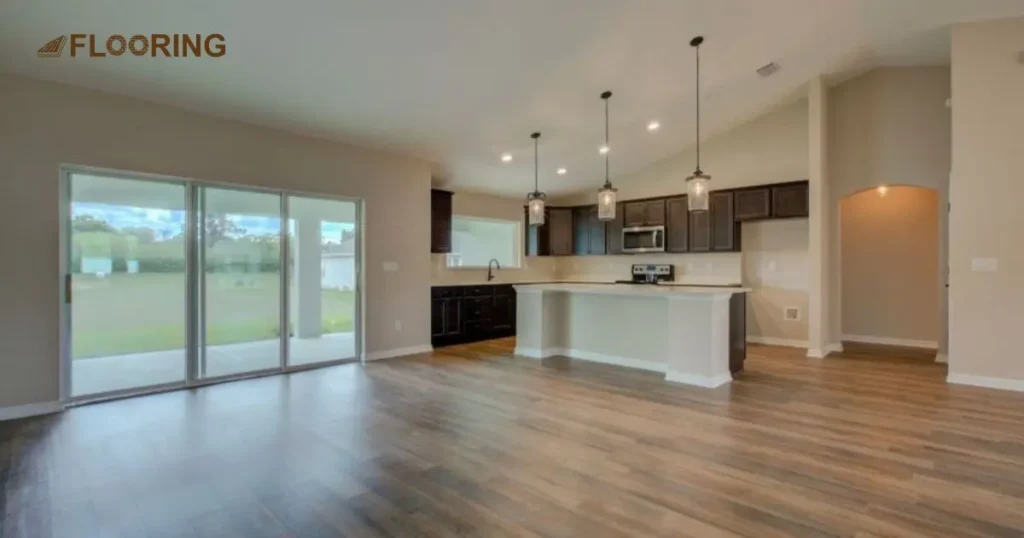
Longevity of Painted Vinyl Surfaces
Painted vinyl surfaces typically don’t last as long as the original vinyl finish. The longevity depends on factors such as paint quality, application technique, and daily wear. High-traffic areas may show signs of wear more quickly than less-used spaces.
To maximize the lifespan of painted vinyl, use high-quality paints and sealants designed for flooring. Regular maintenance and prompt touch-ups can help extend the life of the new finish. However, be prepared for the possibility of needing to repaint or refinish more frequently than with unaltered vinyl planks.
Care Tips for Color-Changed Vinyl Flooring
Proper care is essential for maintaining the appearance and integrity of color-changed vinyl flooring. Following these tips can help preserve the new finish:
- Regular cleaning: Sweep or vacuum frequently to remove dirt that can scratch the surface.
- Gentle mopping: Use a damp mop with a pH-neutral cleaner designed for vinyl floors.
- Chemical avoidance: Steer clear of abrasive cleaners or tools that can damage the new finish.
- Furniture protection: Place felt pads under furniture legs to prevent scratches and dents.
- Spill management: Clean up spills promptly to prevent water damage to the painted surface.
- Sealant reapplication: Periodically reapply a clear sealant to protect the painted finish.
- Prompt touch-ups: Address any chips or scratches promptly to prevent further damage.
Wrapping Up: The Reality of Changing Vinyl Plank Flooring Color
Changing the color of vinyl plank flooring is possible but comes with significant challenges. While painting, refinishing kits, and professional services offer ways to alter the appearance, these methods carry risks. Reduced durability, potential warranty issues, and increased maintenance needs are important factors to consider.
Whether you decide to change your vinyl plank flooring colors and styles or opt for alternatives, carefully consider the long-term implications. The wide range of vinyl plank flooring colors and styles available in new products might offer a more durable and satisfactory solution than altering existing floors.
Frequently Asked Questions
Can I use regular wall paint on vinyl plank flooring?
No, regular wall paint isn’t suitable for vinyl planks. Use paint specifically designed for vinyl flooring to ensure proper adhesion and durability.
How long does it take for painted vinyl plank flooring to fully cure?
Curing time varies by product but typically takes 24-72 hours. Allow at least a week before placing heavy furniture on the newly painted surface.
Will changing the color of vinyl planks affect their water-resistant properties?
It might. Some paints or finishes can compromise the water-resistant nature of vinyl planks. Use products designed for vinyl to minimize this risk.
Can I change the dark vinyl plank flooring to a lighter color?
Yes, but it’s challenging. Lighter colors over dark vinyl often require multiple coats and may not achieve the desired brightness.
Is it possible to remove paint from vinyl plank flooring if I don’t like the result?
Removing paint from vinyl planks is difficult and may damage the flooring. It’s often easier to repaint or replace the planks entirely.
How does humidity affect the process of changing vinyl plank color?
High humidity can extend drying times and affect paint adhesion. Ensure proper ventilation and consider using a dehumidifier during the color change process.
Can I change the texture of vinyl planks while altering their color?
Changing the texture is challenging. Most color-change methods will maintain the original texture, though some may slightly alter it.
